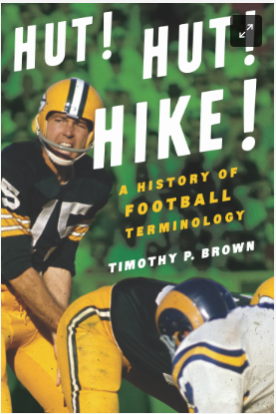Mr. Cub Milestones of Ernie Banks, Baseball's Ambassador
Powerhouse at the Plate: Banks was a slugger, plain and simple. He cracked 512 home runs, ranking 23rd all-time and leading the National League twice. His signature "Let's Play Two!" roar after day games fueled both his own determination and the cheers of thousands. He drove in over 1,630 runs and collected over 2,500 hits, solidifying his offensive prowess.
Beyond the Numbers: But Banks was more than just numbers. He won two National League MVP awards, showcasing his all-around excellence. He also garnered 14 All-Star selections, a testament to his consistent brilliance. His fielding prowess earned him a Gold Glove Award at shortstop in 1960, showcasing his versatility.
Breaking Barriers: In an era of racial segregation, Banks defied odds. He became the first black player for the Cubs and paved the way for future generations. His quiet dignity and on-field excellence earned him respect and admiration, breaking down barriers one swing at a time.
Beyond the Field: Banks' love for the game and his positive attitude transcended the diamond. He became known as "Mr. Cub," a title reflecting his loyalty and leadership. His infectious smile and unwavering optimism earned him respect and adoration from fans across the league.
Cal Ripken Jr Hall of Fame Oriole
Tommy Lasorda Dodger Blue Manager
Tommy managed the Los Angeles Dodgers of Major League Baseball from 1976 through 1996. Winning the World Series 1981, 88. Lasorda was the NL Manager of the Year 1983 and 88.
Grant Fuhr Hockey Goaltending legend
-Early promise and Stanley Cup success (1980s): Drafted by the Edmonton Oilers in 1981, Fuhr quickly established himself as a key piece of their dynasty. He shared netminding duties with Andy Moog and later Bill Ranford, but emerged as the starter during their Stanley Cup runs in the mid-80s. Fuhr backstopped the Oilers to four Stanley Cup victories (1984, 1985, 1987, 1988).
-Dominant individual accolades: Fuhr's talent was undeniable. He won the prestigious Vezina Trophy (awarded to the league's best goaltender) in 1988 and was a six-time NHL All-Star. He set numerous records, including the NHL record for most consecutive appearances by a rookie goaltender (23 games in 1981-82).
-Challenges and a shift in teams (1990s): Fuhr's career wasn't without setbacks. He faced a suspension in 1990 due to substance abuse issues. While he returned to form, his time with the Oilers eventually came to an end. He played for several other teams throughout the 1990s, including the Buffalo Sabres, Toronto Maple Leafs, Los Angeles Kings, and Calgary Flames.
-Legacy of a trailblazer: Grant Fuhr retired in 2000 after a remarkable 20-year career. He is considered one of the greatest goaltenders of all time, being inducted into the Hockey Hall of Fame in 2003. He was also a pioneer for Black players in the NHL, becoming the first Black goaltender to win the Stanley Cup and be enshrined in the Hall of Fame.
Born September 28, 1962, in Spruce Grove, Alberta, was Hockey Hall of Fame Goalie Grant Fuhr. This legend won many accolades during his 19-year NHL career. Fuhr won the Vezina Award, was a two-time NHL All-Star, and was selected as one of the top 100 Greatest NHL players in 2017. He was on four Stanley Cup Champion teams. Grant guarded the net for the Edmonton Oilers, Toronto Maple Leafs, Buffalo Sabres, Los Angeles Kings, St Louis Blues, and Calgary Flames registering 403 wins for his team with a save percentage of .887.
Willie Mays The Say Hey Kid
Born in Westfield, Alabama, Mays' journey began amidst racial segregation. Despite the challenges, his raw talent was undeniable. Signed by the New York (later San Francisco) Giants in 1950, he quickly rose through the minor leagues, showcasing his power hitting, blazing speed, and exceptional fielding. His major league debut in 1951 marked the beginning of an era.
Mays' versatility was unmatched. He was a prolific hitter, twice leading the National League in batting average and finishing his career with a staggering .302 average and over 660 home runs. On the basepaths, his speed made him a constant threat, stealing over 300 bases in his career. Yet, Mays' brilliance extended beyond offensive prowess. He was a defensive stalwart, patrolling centerfield with grace and a strong arm, winning a record-tying twelve Gold Glove Awards.
The legend was a 24-time All Star; a 12-time Gold Glove Award winner. He hit 660 career homeruns, over 1900 RBIs, a .301 batting average, and was an NL MVP in 1954 and 1965. MLB Jersey 24. MLB Jersey 14.
Carlos Beltran Baseball Star Slugger
Satchel Paige Baseball Star with a Golden Arm
Satchel Paige's baseball career was a unique blend of dominance, longevity, and showmanship. While official statistics are spotty due to his time in the Negro Leagues, his talent was undeniable. Nicknamed for his ability to throw a heavy fastball, Paige is credited with pitching in over 2,500 games and winning roughly 2,000 of them.
Despite his legendary status, segregation kept him out of Major League Baseball until he was 42 years old. However, he still made a significant impact. Debuting for the Cleveland Indians in 1948, Paige became the oldest rookie ever and helped them win the World Series that year. He continued to pitch effectively well into his 50s, setting the record for the oldest player in Major League history at 59.
Born July 7, 1906, in Mobile, Alabama, was Baseball Hall of Fame Pitcher, Satchel Paige. Paige was a six-time Negro League, and two-time MLB All-Star and a member of the 1948 World Series Champion Cleveland Indians, the same year he made his debut in the MLB at the age of 42. He began his professional baseball career in 1926 with the Chattanooga Black Lookouts of the Negro Southern League and became one of the most famous and successful players from the Negro leagues.
In the Negro Leagues he was known to have played for:
Chattanooga Black Lookouts (1926)
Birmingham Black Barons (1927–1930)
Baltimore Black Sox (1930)
Cleveland Cubs (1931)
Pittsburgh Crawfords (1932–1934, 1936)
Bismarck Churchills (1935)
Kansas City Monarchs (1935, 1939–1947)[1][2]
Trujillo All-Stars (1937)
New York Black Yankees (1941)
Memphis Red Sox (1943)
Philadelphia Stars (1946 and 1950)
Lionel Conacher NHL Legend
Rube Foster
Foster was born in Calvert, Texas, and began his professional baseball career in 1897. He was a talented pitcher, and by the early 1900s, he was one of the best black baseball players in the country. In 1903, he led the Cuban X-Giants to the "Colored Championship of the World."
In 1907, Foster became the player-manager of the Chicago Leland Giants. He quickly established himself as a successful manager, and in 1911, he founded the Chicago American Giants, one of the most successful black baseball teams of the pre-integration era.
In the early 1920s, Foster began working on creating a stable and financially successful black baseball league. In 1920, he founded the NNL, which consisted of eight teams from major cities nationwide. The NNL was a huge success, and it helped to elevate the status of black baseball. Rube saw his team, the Chicago American Giants, win the Negro National League pennant 1920–22, 26.
Foster served as the NNL's president and treasurer until he died in 1930. He was a tireless advocate for black baseball, and he played a key role in the development of the Negro leagues. In 1981, he was elected to the National Baseball Hall of Fame.
Hap Holmes A Champion Across Leagues
Early Steps and Toronto Triumph: Holmes began his professional career in 1912 with the Toronto Blueshirts of the National Hockey Association (NHA). Despite missing games due to various reasons, he played a crucial role in their 1914 Stanley Cup victory, the first-ever for a Toronto-based team. This early success set the stage for a career characterized by resilience and adaptability.
League Hopping and Championship Pursuits: Following his Toronto stint, Holmes embarked on a journeyman phase, playing for the Montreal Canadiens, Pittsburgh Pirates, and Boston Bruins. While individual statistics aren't comprehensive, contemporary accounts acknowledge his talent and impact. He returned to Toronto in 1926 with the newly formed Toronto Maple Leafs, where he solidified his legacy by winning his second Stanley Cup in 1927.
Late Career Success and Final Chapter: After another stint with the Montreal Canadiens, Holmes found success with the Chicago Blackhawks, helping them lift the Stanley Cup in 1934. He capped off his incredible career with the New York Rangers, winning his fourth and final Stanley Cup in 1938. This feat remains unmatched, showcasing his adaptability and ability to thrive in different team environments.
Beyond the Wins: While statistics paint an incomplete picture, Holmes' contemporaries consistently praised his athleticism, calm demeanor, and ability to rise to the occasion in big games. He was known for his agility and butterfly technique, which was innovative for his era.
A Legacy Etched in History: Hap Holmes' career transcended individual accolades. He symbolized perseverance and adaptability, winning championships with four different teams across eras. His unique achievement and impact on the game earned him a well-deserved induction into the Hockey Hall of Fame in 1972.
Remembered as:
-A four-time Stanley Cup champion with four different teams (Toronto Blueshirts, Toronto Maple Leafs, Chicago Blackhawks, New York Rangers)
-A versatile and adaptable goaltender who thrived in different team environments
-A pioneer of the butterfly technique, known for his athleticism and calm demeanor
-A true winner and a legend in the history of hockey



.jpg?https://jerseydispatch.com/pfeL/p/c312642c0431e75b485e432232c99c1c/website/Daily-Sports-Uniform-Number-History/February/February-8-Jersey-Numbers/Images/.Basketball_at_Pas-en-Artois,_France,_1918_(20166469838).jpg)
.jpg?https://jerseydispatch.com/pfeL/p/c312642c0431e75b485e432232c99c1c/website/Sports-History-Photo-of-the-Day/February-Images/February-8-Image/images/.640px-Arctic_Sisterhood_Basketball_banner,_Nome_(NOWELL_200).jpg)





